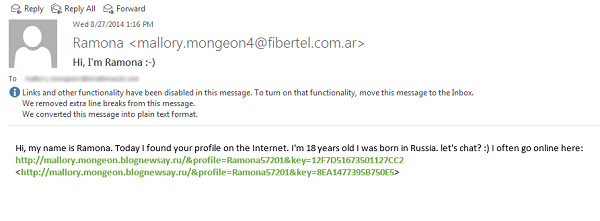Email Deliverability
Does Text to Image Ratio Affect Deliverability?

Email Deliverability


A best practice floating around the emailsphere is that marketers should have a 60/40 text to image ratio in their email file. So why should we email marketers and designers give a hoot about finding the perfect balance with our text and images? Because it’s all about the deliverability, baby!
The idea is that image heavy emails without much text can raise a red flag for SPAM filters. This theory was formulated because spammers sometimes display information in large images instead of text so that the filter programs cannot “read” the content. Because of this, most articles warn against sending image only emails and recommend the 60/40 text to image ratio to avoid email deliverability issues.
This 60/40 assertion ignited the blog topic at hand:
Does your text to image ratio within your email affect deliverability?
We never guesstimate when it comes to best practices for email marketing, so the only way we could find out if a relationship exists between one’s text to image ratio and deliverability was to get to testing with our pre-send SPAM testing tools. Read on to see what goods we discovered!
Before we could start testing the text to image ratio and its effects on deliverability, we first had to find a “perfect” text only email that passed all SPAM filters. That way, when testing we would know that an email got caught in a SPAM filter from a change in the text to image ratio and not another underlying factor. This was a little bit of an uphill battle to appease each and every SPAM filter but we did it!
Now that we had an email that would pass through all SPAM filters, we created email files that ranged in the number of characters and the number of images used.
Before we added images to our files, we made 16 different content-only files that ranged from 168 – 111,190 characters. It wasn’t technically possible to test an email with 0 characters because it would have no content, so our smallest was a bare bones email at 168 characters.
We then cloned each file three times and added images so each email had either no images, one image, two images or three images.
For example, one of our original content-only files consisted of 168 characters. After cloning and creating all the different variations, the four files types existed below:
These variations existed for all of the 16 original files which equated to 64 files total.
Because our previous research showed us that image size does not affect deliverability, we did not vary the image dimensions in the tests.
By leveraging our SPAM reporting, which tests against 23 of the most popular SPAM filters, we found that if your email has 500 characters or more, content to image ratio does NOT affect deliverability! This finding was contrary to what we’d heard from many marketing resources, so we were surprised to say the least. All of the emails we tested with 500 characters or more got the green light from all the SPAM filters, regardless the number of images added.
It’s critical to note that HTML emails of 500 characters or less are very rare. SPAM filters probably have no problem flagging emails under 500 characters as SPAM because emails structured around this character count usually are SPAM!
A SPAM email often consists of 1-3 sentences with a single link within it. It took me about 5 seconds to search in my junk folder to find a SPAM email structured this way. Check it out below:

So word of the wise y’all, don’t send marketing emails with 500 characters or less. After we uncovered this breaking point, we wanted to look closer and see if text to image ratio for emails UNDER 500 characters or less affected deliverability.
We found that if you are sending an email with 500 characters or less, make sure you have a supporting image within the email. We came to this conclusion because when an email file was comprised of 500 characters or less and did NOT have any images within the email, each email was caught in the 4 SPAM filters below:
Once one image was added to the mix, the number of SPAM filters that blocked an email with 500 characters or less decreased from 4 filters to 3 filters:
Our next step of testing was to examine if adding more images to files with 500 characters or less would further decrease the number of SPAM filters that failed. Alas, no dice. The number of SPAM filters failed did NOT change when more than one image was added to an email with 500 characters or less. Emails with one, two or three images will still get stuck in Outlook 2007, 2010, and 2013.
It seems the Outlooks turns their noses up at emails with sparse text, whether or not images are in the mix. Moral of the story, don’t send emails with 500 characters or less. If you follow this simple rule, your text to image ratio won’t affect your deliverability!
If you feel you ABSOLUTELY must send an email under 500 characters, make sure you have at least one image in your email. However, adding more images won’t up your chances of passing through all the SPAM filters.
You can (and absolutely should) follow best email practices to avoid deliverability issues, but how do you know if that’s enough to ensure your email reaches the inbox? Most email marketers aren’t even aware they are having issues with SPAM filters until a serious problem rears its ugly head, like having your domain end up on a blacklist or your sender reputation taking a nose dive. That’s where pre-send email tools like SPAM testing come in to play.
The only way you can know you’re having deliverability issues is by testing BEFORE you send. Protect your ROI and your bottom line by leveraging our SPAM testing software to ensure your inbox placement.
What issues have you seen regarding text to image ratio and deliverability? Have you done testing on SPAM filters and seen different results? We’d love to for you to comment below regarding the quirks you have encountered in the wild or the workarounds you’ve found along the way.